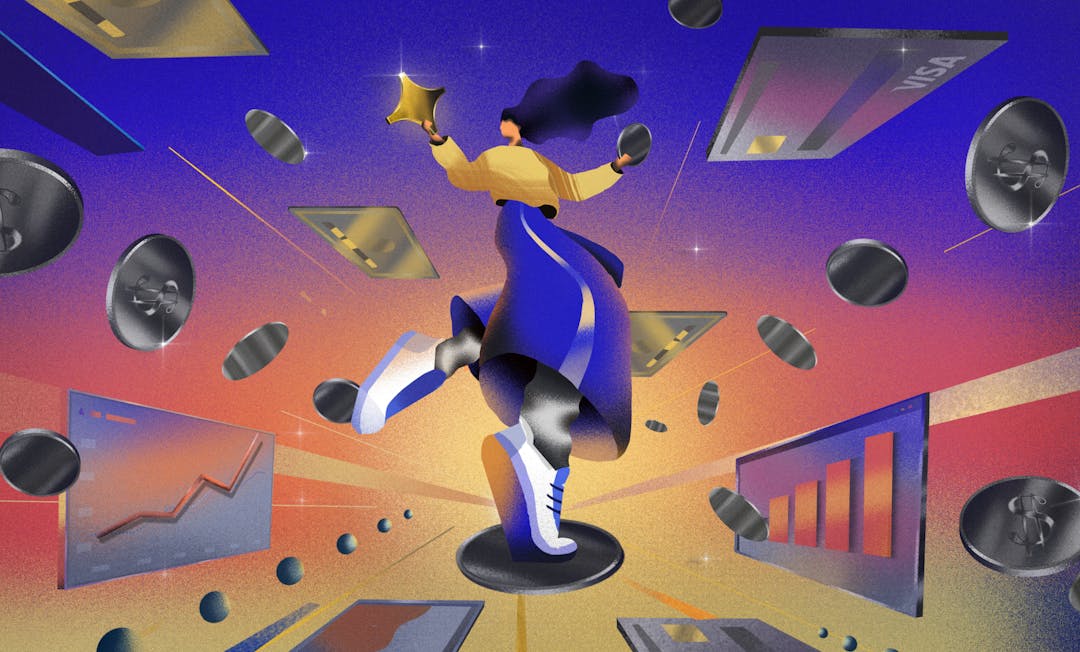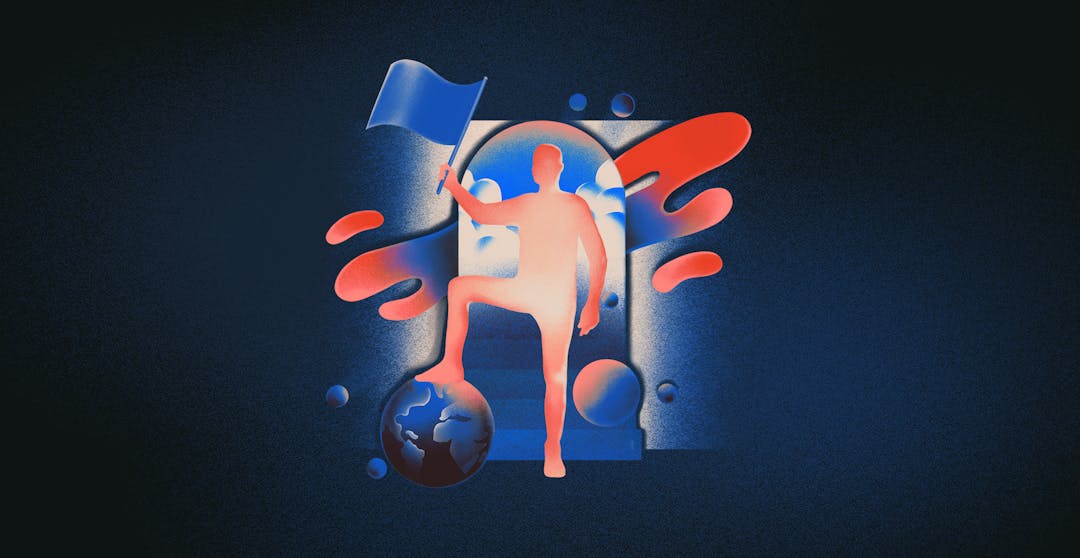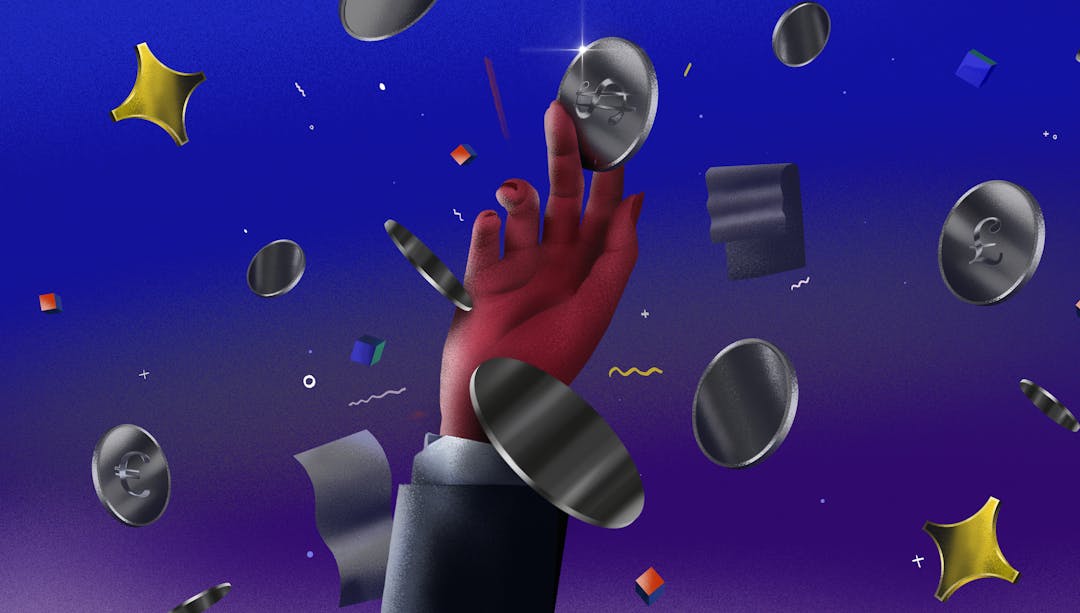A complete guide on how to start a SaaS business. Learn everything from the costs of SaaS development to the key metrics to track for success.
If you've been thinking about starting a SaaS business, here's a motivating stat: SaaS revenue is expected to reach $233 billion by 2022.
Building a SaaS business is definitely no easy task, but if you begin with the proper steps, you'll be laying a solid foundation for success. This comprehensive guide to SaaS development will help get you on the right path to a scalable revenue engine.

What is SaaS application development?
SaaS application development involves creating a software delivery model, hosting the application centrally, and availing it to users over the internet. As an independent software provider, you may contract a third-party cloud host to provide a home for the application. But if you have the necessary hosting resources, you may host it yourself.
SaaS is a diverse space and can be applied to most areas of human activity—where there's a service, there's likely a SaaS opportunity. For instance, SaaS applications find usage in the following industries:
Ecommerce
New businesses can utilize SaaS e-commerce solutions to begin selling at the click of a button and saving money on web development and design. Ecommerce companies, like Shopify, provide you with any feature you need to run your online shop. ProfitWell, too, offers an eCommerce subscription analytics platform to help you stay on top of your performance.
CRMs
Customer relationship management (CRM) software is crucial for handling customer data. They improve customer relationships, facilitate product promotion, and boost sales campaigns. HubSpot, Salesforce, and Freshworks are examples of CRMs.
Vertical SaaS
Vertical SaaS is a family of software products that serve the needs of a niche industry or narrow market. They handle the distinct needs of a particular sector like SaaS business in healthcare, digital banking, retail, or hospitality. Examples of vertical Saas include Veeva, Procore, and Clio.
The future of SaaS products
SaaS continues to grow exponentially and remains the largest market segment. Virtually every sphere of human activity has its own distinct SaaS software that is designed to facilitate or improve operations. With such vast and diverse SaaS solutions out there, what awaits us in SaaS development future?
Here are just five of the growing trends for SaaS application development:
- Artificial intelligence (AI) – AI has expanded to cloud solutions and is expected to develop within the future of SaaS development.
- Vertical SaaS – As more niche industries sprout, vertical SaaS is expected to grow due to the ability to effectively address customer needs.
- API connections – With the massive market adoption of SaaS, integration capabilities with existing systems are a must.
- Mobile optimization – It's estimated that about 70% of the world population uses their mobile device to search the internet, so SaaS products must have rich functions for mobile-first users.
- The PaaS model – As SaaS continues to innovate, customer retention is becoming the main focus for providers. The PaaS model facilitates the ability to build custom apps as add-ons to their service or product.
And as people look to solve emerging issues across industries, new SaaS groups are bound to appear. The Covid-19 pandemic alone has led to the popularity of SaaS products shooting through the roof. And the SaaS industry is only going to get bigger.
6 key steps to start building your SaaS engine
When developing your SaaS product, be sure to set things right from the get-go. Remember that the idea is to offer a ready-made solution, upgrade it constantly, and maintain it 24/7.
1. Do market research
Research, research, and research. Part of this research should include defining the competition. Your competitors can provide useful real-world evidence of what's working and what's not. Look for gaps in their product that yours could fill.
Research trends, rising needs, etc. Identify the latest technologies that can give you a competitive edge in the market. The SaaS industry depends on niche innovations and tech trends when serving businesses. So be sure to perform in-depth research into the happenings of the tech world.
2. Identify product-market fit
Before starting with SaaS product development, it's incredibly important to ensure that you find at least one product-market fit. If your product-market fit is misaligned, your business will have a difficult time scaling because it will have a negative impact across your entire business model.
Finding product-market fit is not easy, but it's certainly not something you can skip. Below are some key steps to help you get started.
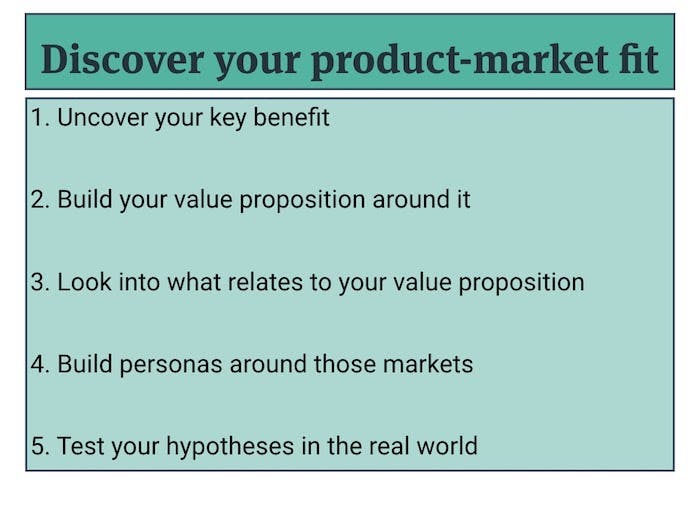
3. Recruit your A team
SaaS developers with solid experience in SaaS product implementations will be a big plus. While you can source developers domestically, it's recommended to cast your net wider. They can perform the tasks remotely, considering the current pandemic situation.
Encourage constant communication to ensure everyone is on the same page regarding SaaS development project requirements and progress. Additionally, adopt agile development practices that promote optimum flexibility and thorough testing.
Most SaaS development projects require the following skills:
- Project management
- Front-end and back-end development
- Experience in interaction with datasets
- Database queries
- JavaScript libraries
- Server-side queries
- Business analysis and rules development
- QA testing
Furthermore, though building the right SaaS development team is definitely key, there are other skillsets that play a significant role in launching, marketing, selling, and delivering your SaaS app. So, be sure you're bringing those various skillsets on board. Remember, your team is who will help you scale.
Other roles most SaaS businesses include are the following:
- UX web-designer
- Product owner/manager
- Marketing manager
- Sales manager
- Customer Success Manager
4. Build your MVP
It's now time to build a Minimum Viable Product (MVP). An MVP consists of the central features that you expect to function at the fundamental level. With an MVP, you can find out whether your proposed software can handle the issues for which it was developed.
Once you're confident that it can solve the tasks successfully, the MVP can move into development. This stage also presents you with an opportunity to see how you can develop a product that can outperform your competition.
Be sure to pick the tools and approaches that will enable you to create an MVP for your SaaS application. Here, you need to ask yourself:
- How mature is the programming language or technology?
- Can it fit my MVP's needs?
- What's the programming language's roadmap?
- How well can it support the functionalities I'm planning to build?
- Can I easily integrate technology with other products?
- Is the developer resource pool large enough?
5. Outline your vision
Your software development process is incomplete without an excellent business strategy. The best starting point is to identify business opportunities and how to entice users.
Additionally, outline the values customers will get and consider the specific cloud services' abilities. And think about your marketing efforts way before the product creation.
6. Develop the SaaS
Now comes the actual SaaS development stage. Here, you develop the core features further and scale them to the intended capacity.
Testing is continuously done, especially if the SaaS product is tailor-made to suit the client's exact requirements. You don't want a product that will bring untold headaches instead of solutions.
A/B test is among the often-used approaches to ensure optimum performance. The product will then undergo several iteration and upgrades depending on tests and shareholders' feedbacks.
How much does it cost to develop a SaaS product?
Lots of factors come into play when determining the various costs of your product development. The design, server, marketing, maintenance, testing, and iterations are some of these considerations.
UX design process
Designing the central screens, extra screens, profiles, and interactions will cost up to $15,000.
Since you're offering a service to actual human beings, your interface should be attractive and clear. The designers need to liaise with the marketing research team to ensure the interface fits your needs and satisfies the end-users.
Get guidelines from the project discovery stage regarding features, target audience's tastes and requirements, and monetization strategy. Then have a central design goal and strive to enrich your product. Remember to keep it scalable. So when developing a design code, define your business's voice and tone.
Server infrastructure
The cost of servers majorly depends on the number of your users. It ranges from $30 to $8,000.
Usually, SaaS companies spend the most on servers and hosting. Your server capacity should increase proportionately to the increase in the number of users.
Maintenance
Again, the number of users determines maintenance costs. It falls anywhere from $3,000.
SaaS development doesn't end at the launching stage. You'll have to monitor it to ensure it works as intended. Automatic monitoring software will come in handy to ensure you get alerts whenever an issue crops up. As the number of users increases, be prepared to invest in more robust monitoring resources.
Once you get an alert for any abnormal behavior, a programmer on standby should resolve the issue as soon as possible. Since hiring an in-house maintenance team can be expensive, you can opt to outsource the task.
Testing & iteration
Depending on the functionalities and features that your product will have, you'll need at least $20,000 for the testing, iteration, and development costs.
You have to collect user feedback in terms of the feature requirements and SaaS specifics. So you can calculate the cost for prototype creation, MVP building, QA deployment, and product upgrades. Additionally, you should know the expected number of users and SaaS development team members—the larger the team and targeted audience, the more resources are needed.
Marketing
Developing your product is one thing, and SaaS marketing is altogether another thing. So be sure you've set aside at least 10% of your budget for marketing. As you grow that number should also grow. Some of the most successful SaaS companies spend as much as 40% of their annual recurring revenue (ARR) on sales and marketing costs.
These efforts include content marketing strategy, branding, feedback study, social media campaigns, Search Engine Optimization, and paid ads.
The best way of tackling this area is to plan adequately and execute the campaigns long before developing the SaaS product. Keep in mind that those companies that invest in marketing, also grow faster.
How to monetize your SaaS solution
One of the key pieces to success and growth depends on your pricing strategy. It's pretty well known that here at ProfitWell, we have a bias toward the freemium model. Our own subscription analytics software ProfitWell Metrics is free—forever. When choosing the model that best fits your business, be sure to consider the many aspects of your business: targeted segment and vertical, costs, customers, positioning and packaging, competitors, etc. And remember that your pricing strategy is something that will need to be evaluated on a consistent basis.
- Free with ads
In-app ads are among the easiest way ofsoftware monetization. Free access means more reach. Who doesn't love free things? So long as the app can help them, people won't mind the constant ads.
This model also allows you to carry out real-time marketing research and test your hypothesis. Lastly, revenue is usually instant. But be sure not to overdo things, as this may cause user experience to plummet. - Freemium
Many adopt thefreemium modelfor SaaS.Freemium is an acquisition model, not a revenue model, so this is a measured strategy to unlock lower CAC and the top of your funnel.Users get to access the product or service free of charge, see the value, and then will pay more for more functionalities. The more the cost, the more the functionalities.
Many users love freemium due to its accessibility. Just be sure your free services provide enough value to drive the user to subscribe to a higher package. Therefore, understand how to package your features. - License
A licensing model is asoftware monetization strategythat requires your users to purchase a license from you. They'll get a license file that defines the purchased SaaS features, duration of its validity, number of users allowed to use the software, computers that can access the software, and other relevant information.
They can store the file locally on the same machine as the service or remotely on a server. - Subscription
Thesubscription-based business modelis a business model that charges customers a recurring fee—typically monthly or yearly—to access a product or service.Premium users are always looking for new features that will take their experience to the next level. As long as your customers continually see the value your company provides for them, they'll continue to pay you for it. - One-off purchase
This model is the least popular since you'll need to update your SaaS environment frequently and automatically. If you're looking to make it sustainable, you'll have to bring in more customers and set high prices constantly.
Another thing is that people tend to buy a SaaS product only after testing it to see if it suits them. You may need to work on your corporate image or offer free trial periods to attract usage.
Metrics to track for SaaS development success
SaaS businesses have their own vital factors that influence their success. So you'll need to understand the main metrics that indicate whether you're on the right track or not. ProfitWell Metrics, for example, provides you with real-time reporting and analytics to help you understand why you're growing, or not. Analytics tracking is important in order to gauge the value that your customers are getting from your product.
The following are some of the key metrics you should be tracking for SaaS software development:
CAC
Customer acquisition cost (CAC) is how much you need to spend to generate a lead and convert it into an actual customer. It's an important metric to track for growing companies in order to determine profitability and efficiency. CAC directly impacts future growth and as time passes you'll begin to understand the time it takes to recover from CAC and turn a profit. You need to keep CAC low in order for your business to be viable.
CAC = (total cost of sales and marketing) / (# of customers acquired)
MRR
Monthly recurring revenue (MRR) allows you to determine predictable revenue that your customers generate each month. You can use it in conjunction with churn rates and customer acquisition metrics to extrapolate and predict future income. Additionally, tracking your MRR can provide you with a good overview of how your product is being perceived.
MRRt = ∑Recurring revenue

Churn Rate
Your churn rate is the percentage of your customers that leave your service over a given time period. Churn is a direct reflection of the value of the product and features that you're offering to customers. It affects MRR, LTV, and CAC. So it's crucial to keep your churn rate as low as possible.
Customer Churn rate = number of churned customers / total number of customers

Retention Rate
Retention rate is the percentage of customers a business retains over a given period. And for SaaS, in particular, retention rate is one of the most important metrics to track. Retention helps you understand the effectiveness of your product, marketing, customer service, and pricing. Your business will not survive if your customers don't stick around. So it's imperative that you constantly monitor and optimize your retention.
Retention rate = (# of active users continuing to subscribe/total active users at the start of a period)
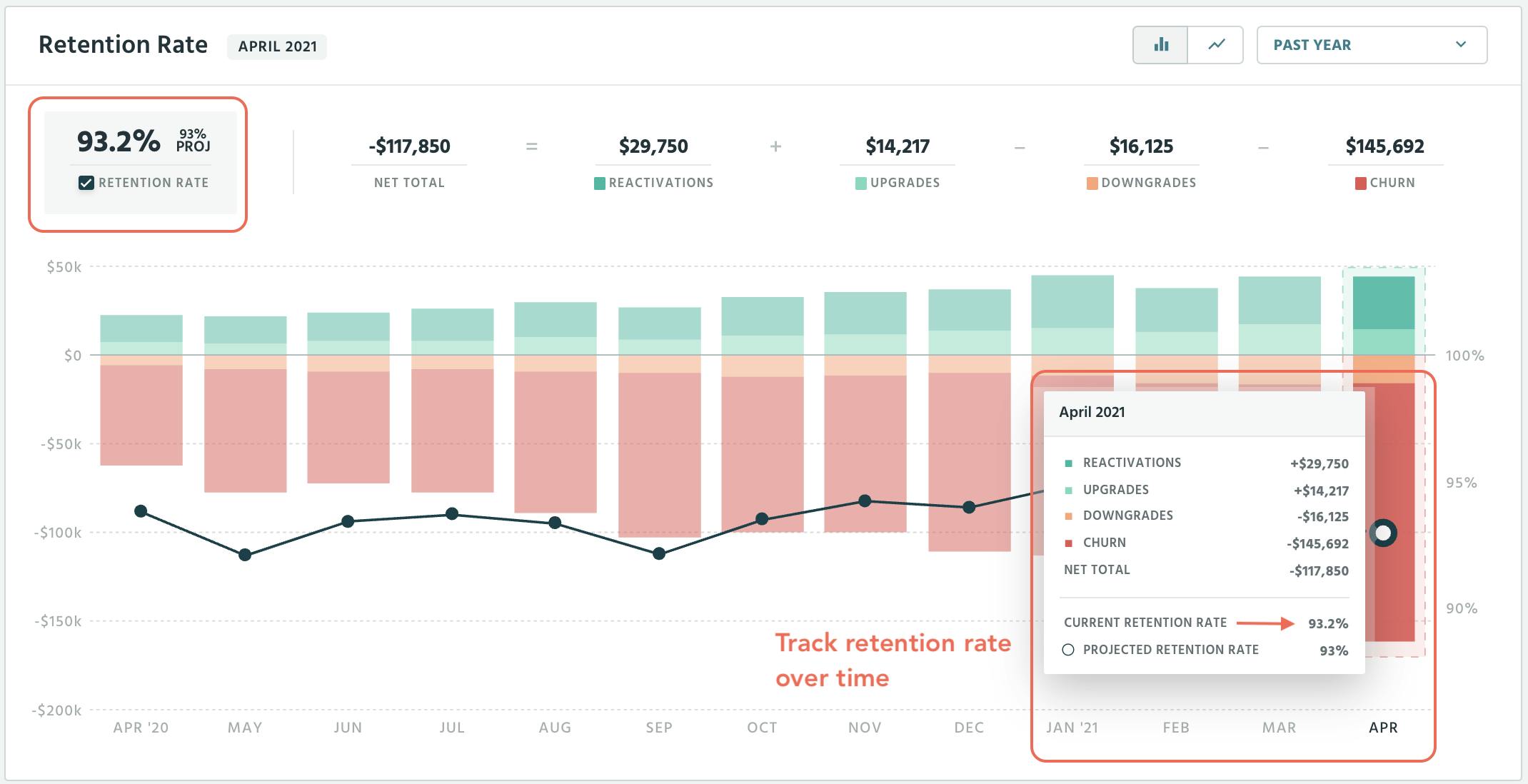
SaaS & scale: unicorn mode
When building your SaaS foundation, be sure to take care of mandatory features and program abilities that will breathe life into your unique value proposition. Then ensure the application is scalable enough to support robust long-term development.
Fortunately, cloud-based infrastructure promotes SaaS scalability by delivering value remotely. And the nature of the SaaS solution allows you to add new iterations quickly as new requirements emerge.
SaaS development FAQs
Having seen how to develop a SaaS platform from the ground up, let's answer some common questions to gain a deeper understanding:
What Are Some Examples of SaaS Products?
Some leading examples of SaaS products include:
- Microsoft
- Google Apps
- Salesforce
- Dropbox
- Slack
- Docusign
- Amazon Web Service (AWS)
- Amazon
- BigCommerce
How do I know if my SaaS is performing well?
You'll need to monitor the metrics that matter the most. The most common metrics to track include MRR, CAC, customer churn rate, and customer retention rate.
Can I white-label a SaaS product?
Yes, you can white-label—rebrand a SaaS solution by placing your trademarks and logo on it. Then you can pay commissions to the owner.
Conclusion
SaaS application development should be done right from the ground up if you're looking to scale your subscription-based business and draw in more revenue. If you need assistance with your subscription revenue metrics, sign-up with ProfitWell Metrics, it's free–forever.


